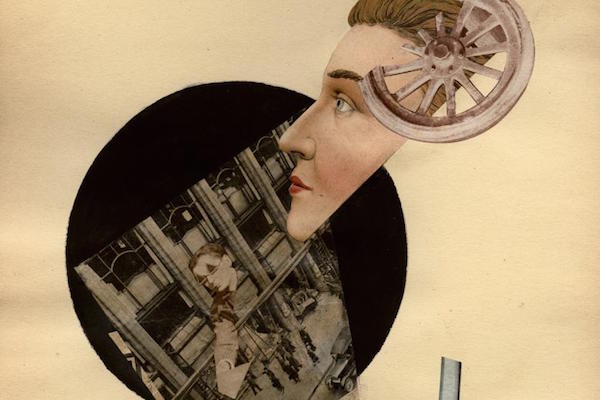
Details of a brazen forgery scandal are slowly emerging in Germany. A criminal gang has reportedly been consigning works by a made-up Dada artist to auction houses around the country for years.
The fictitious Karl Waldmann, allegedly a Dresden-born painter, was hailed as a “rediscovered” star of the German Dada movement. All known works, so the story goes, were discovered by a French journalist at a Polish-run flea market in Berlin shortly after the fall of the Berlin wall.
His works quickly found their way into auctions around the country, and even into museum group shows, for example at Kunsthaus Dresden. But recently, inconsistencies started to emerge.
Furthermore, there is also no trace of the artist’s name in any art historic literature; there’s neither any mention of Waldmann during his alleged lifetime, nor after his “rediscovery” in 1989. In fact, next to nothing is known about the artist’s biography.
There is no mention of the artist in any of the relevant literature.
Photo: Kunsthaus Dresden via Süddeutsche Zeitung
Süddeutsche Zeiting reported that German federal police in Berlin and Saxony are now investigating the case following a criminal complaint by an unnamed art dealer.
Meanwhile, the allegedly fictitious artist’s Belgian gallerist, Pascal Polar, insisted on the existence of the artist and the authenticity of the works. He told Berliner Kurier “I don’t understand why the German police is now investigating.”
The website of the Karl Waldmann Museum, which appears to have no physical address but boasts a large committee which also includes Polar, also warns of the emergence of forgeries. The website posts images of works deemed as fakes, and offers authentication services.
All known works by the artist were allegedly discovered at a flea market in Berlin.
Photo: Museum Karl Waldmann via Die Welt
Kunsthaus Dresden told Süddeutsche Zeitung that they were concerned about the inconsistencies. The museum admitted that the case presented “unanswered questions.” The institution added that “it’s also possible that it is a contemporary art project using fictional strategies.”
Much remains unclear in the mysterious case of Karl Waldmann. If the artist never existed, then who created the artworks, and when?
The suspicions are certainly justified. There are countless examples of forgeries, particularly amongst the Dada or Soviet avant-garde genres.
Related stories:
German Art Dealer Busted Trying to Sell Fake Giacometti Sculpture
Over 50 Percent of Art is Fake
Master Forger Wolfgang Beltracchi Claims He Saw His Painting in Albertina Museum
Dutch Police Arrest Man Peddling Forged Vincent van Gogh Painting for $17 Million